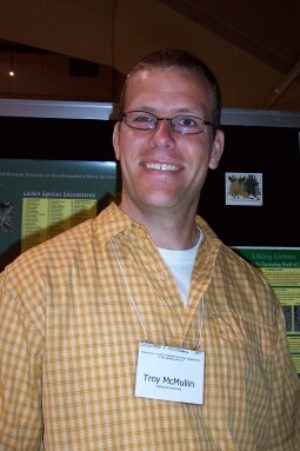Innovation Anthology #6: Research Scientist

In an old forest, lichens hang like feathered beards from the branches of ancient evergreens. Lichens themselves can live for centuries, if not millennia.
That’s why ecologist Troy McMullen believes foresters should pay more attention to lichens when developing plans to manage old growth forests.
As a graduate student at Dalhousie University in Nova Scotia, Troy studied lichens on lands managed by Bowater Mersey Forest Company.
As an evolved form of fungus and algae Living in a symbiotic relationship, many lichen species are unique to old growth forests. They provide food for insects and caribou. And they are the pioneers of forest succession.
TM: They get all their nutrients from the atmosphere and the water that washes over them so they don’t require any root system to go into any soil. So, if there is bare rock, any kind of major disturbance, the lichens will take hold first. It could be generations of lichens that happen before enough soil is created for the first plants from there. And it will just be a successional thing until there is enough soil for trees and the whole forest to grow.
Troy McMullen has identified over 140 tree living lichens in the Bowater forest of Nova Scotia. And he’s prepared a field guide for company foresters.
Thanks today to the Sustainable Forest Management Network.
FOR INNOVATION ANTHOLOGY, I’M CHERYL CROUCHER.
Guest
Pat Dougan, PhD,
Syncrude Research Facility, Edmonton, Alberta, Canada,
Sponsor
Sustainable Forest Management Network
Established in 1995, The Sustainable Forest Management Network is one of Canada's 22 Networks of Centres of Excellence. The SFMN administrative center is hosted at the University of Alberta, Edmonton, Alberta, Canada. The Network brings together top scientists, forest managers and practitioners, First Nations leaders and governments to address known and emerging challenges to forest sustainability.
![]()
Program Date: 2007-02-01